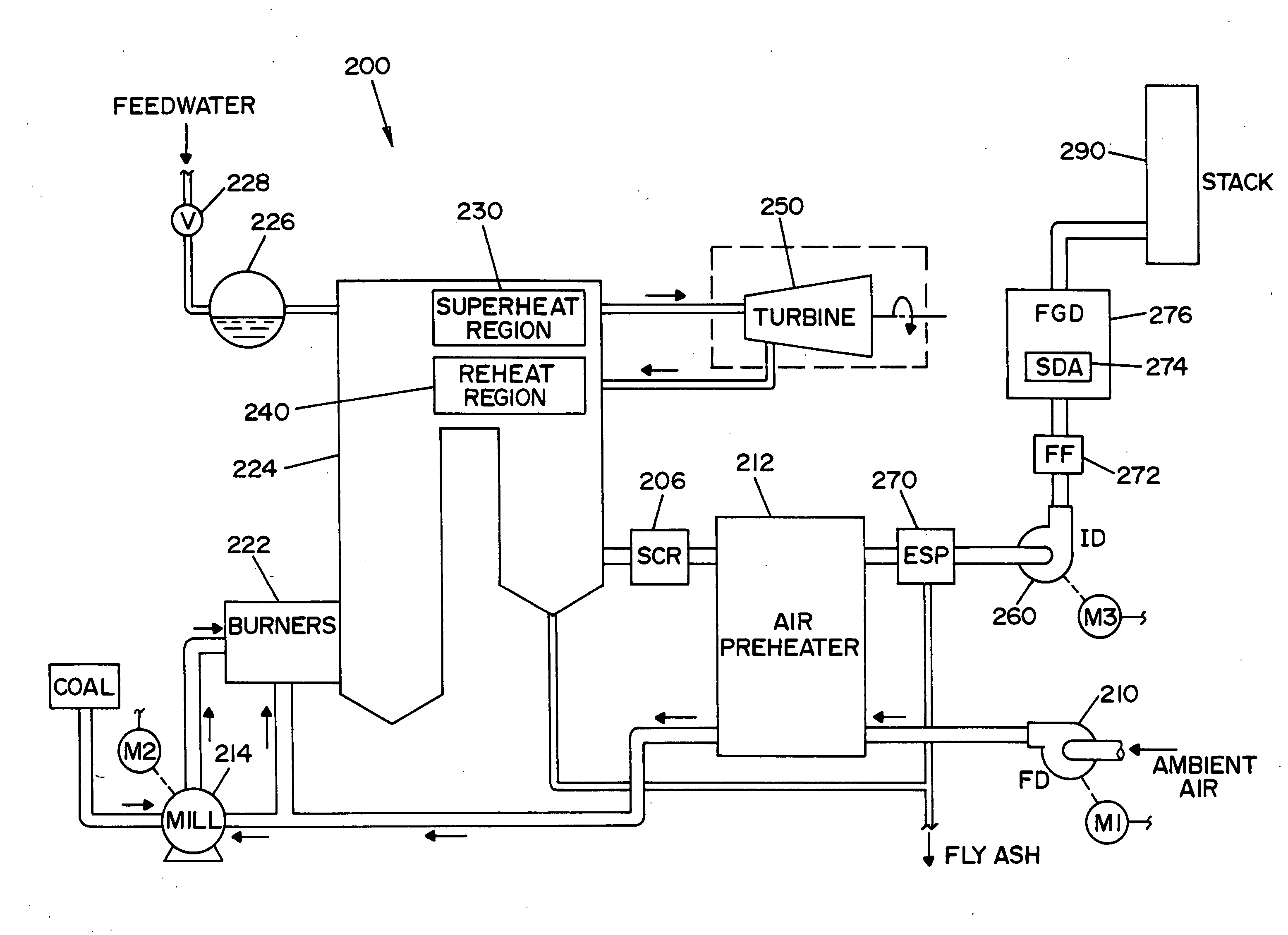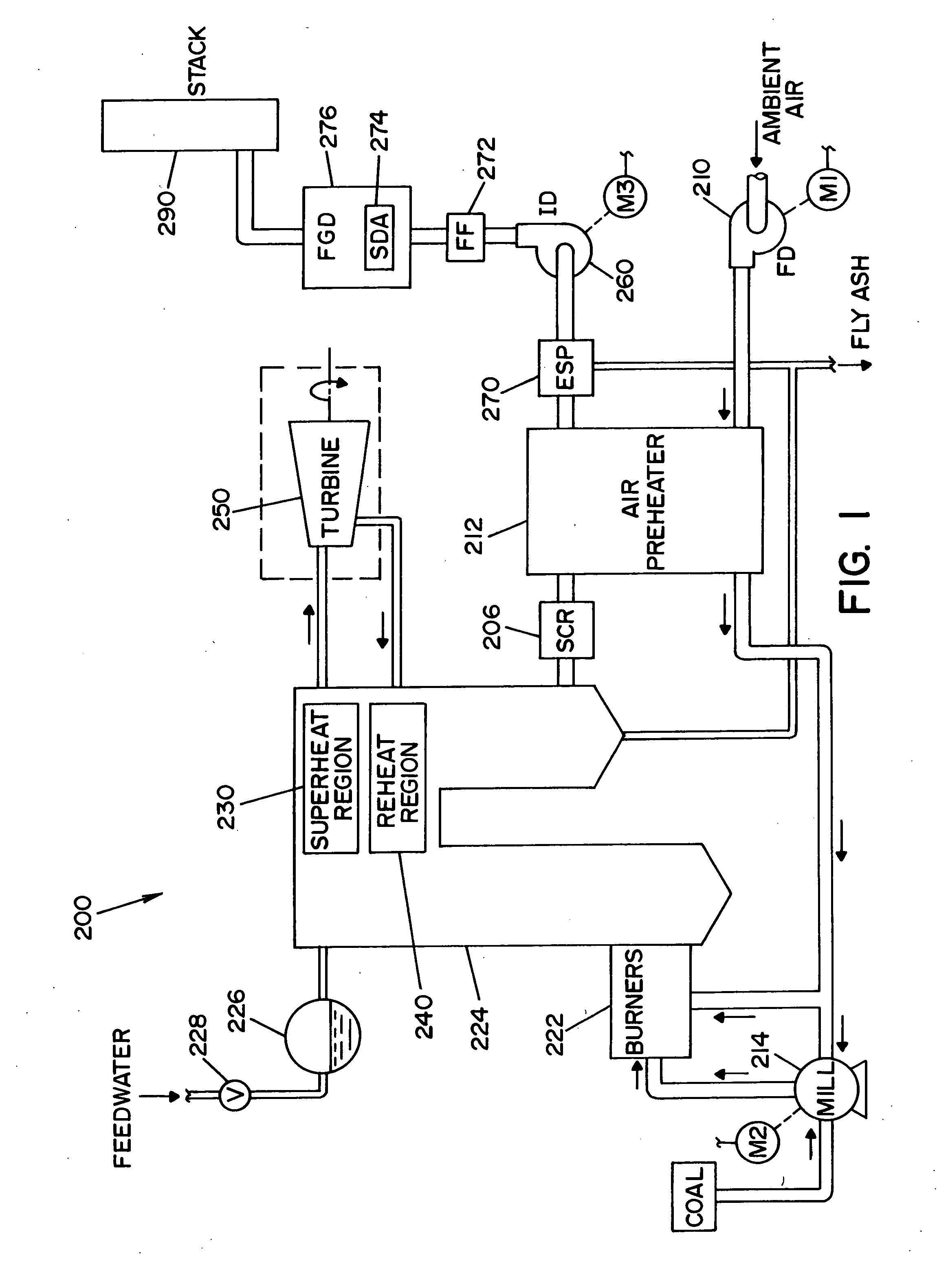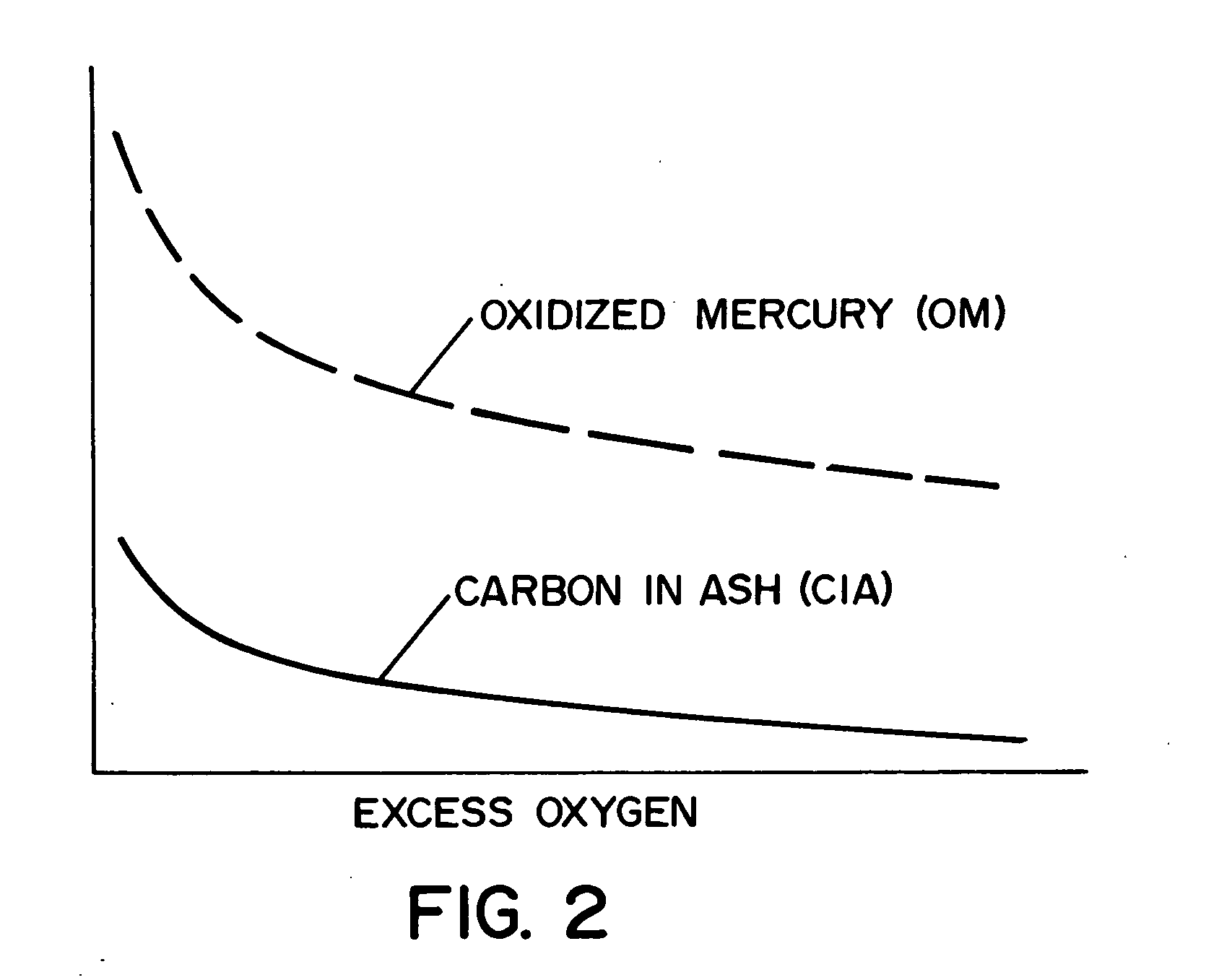Model based control and estimation of mercury emissions
a model and mercury emission technology, applied in the field of model-based control and estimation of mercury emissions, can solve the problems of high mercury concentration in predatory fish and fish eating mammals and birds, difficult to eliminate once absorbed, and high mercury concentration in elemental or total mercury. , to achieve the effect of efficient reduction of elemental or total mercury
- Summary
- Abstract
- Description
- Claims
- Application Information
AI Technical Summary
Benefits of technology
Problems solved by technology
Method used
Image
Examples
first embodiment
[0121] optimization system 100 (FIG. 3) for optimization of mercury emissions will now be described. The goal of optimization system 100 of this embodiment is to determine optimal setpoint values for a set of manipulated variables, such that elemental mercury emissions is reduced while the carbon in ash is held below a specified upper limit. In this embodiment, model 120 takes the form of a steady state model 120D shown in FIG. 7. Model 120D is formed by the combination of a portion of model 120A (mercury emissions prediction) and model 120B (fly ash characteristics prediction), as described above.
[0122] A feedback biased version of the predicted elemental mercury emissions for model 120D can be represented as follows:
c1,t+1=NN1(mt, dt, w)+(z1,t−c1,t) (9)
where z1,t is the current reading (i.e., “measured value”) of elemental mercury emissions, c1,t is the current prediction (i.e., “predicted value”) of elemental mercury emissions, and NN1( ) is the unbiased neural network predi...
PUM
 Login to View More
Login to View More Abstract
Description
Claims
Application Information
 Login to View More
Login to View More - R&D
- Intellectual Property
- Life Sciences
- Materials
- Tech Scout
- Unparalleled Data Quality
- Higher Quality Content
- 60% Fewer Hallucinations
Browse by: Latest US Patents, China's latest patents, Technical Efficacy Thesaurus, Application Domain, Technology Topic, Popular Technical Reports.
© 2025 PatSnap. All rights reserved.Legal|Privacy policy|Modern Slavery Act Transparency Statement|Sitemap|About US| Contact US: help@patsnap.com



